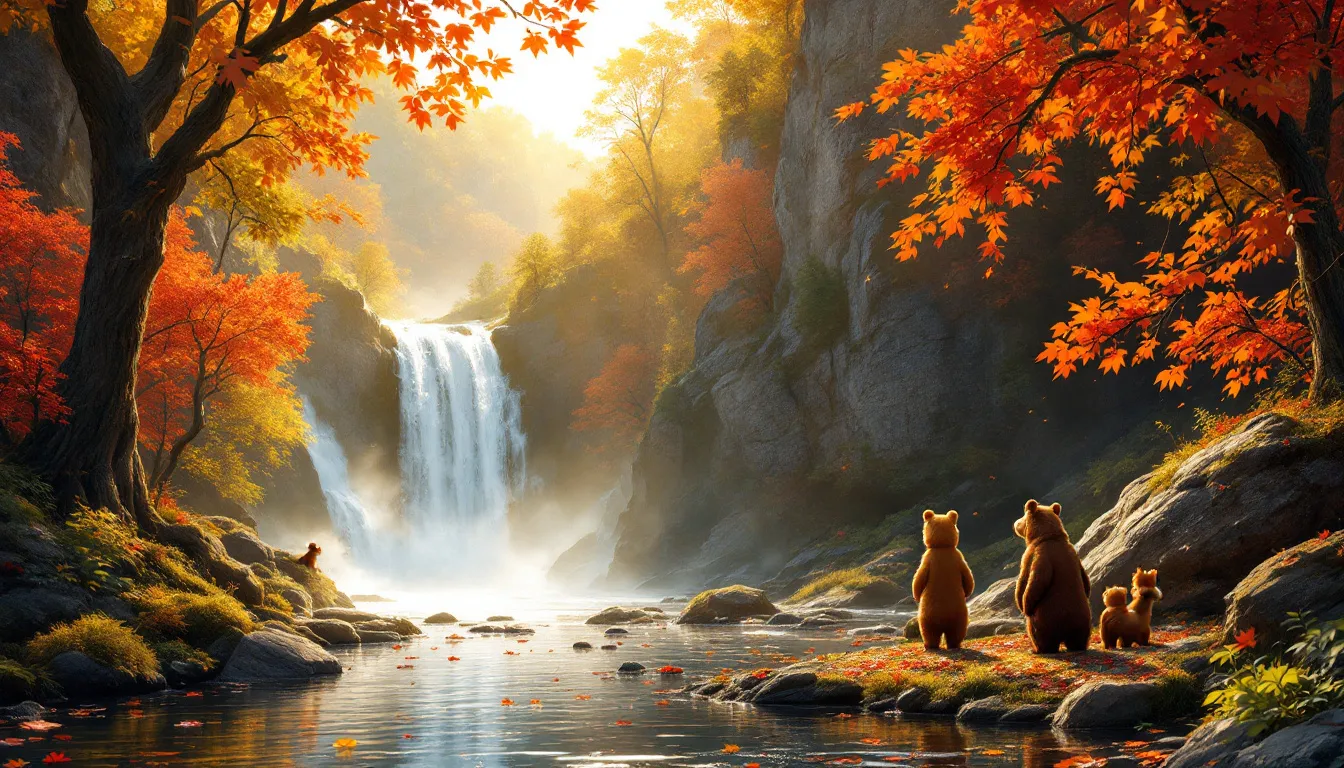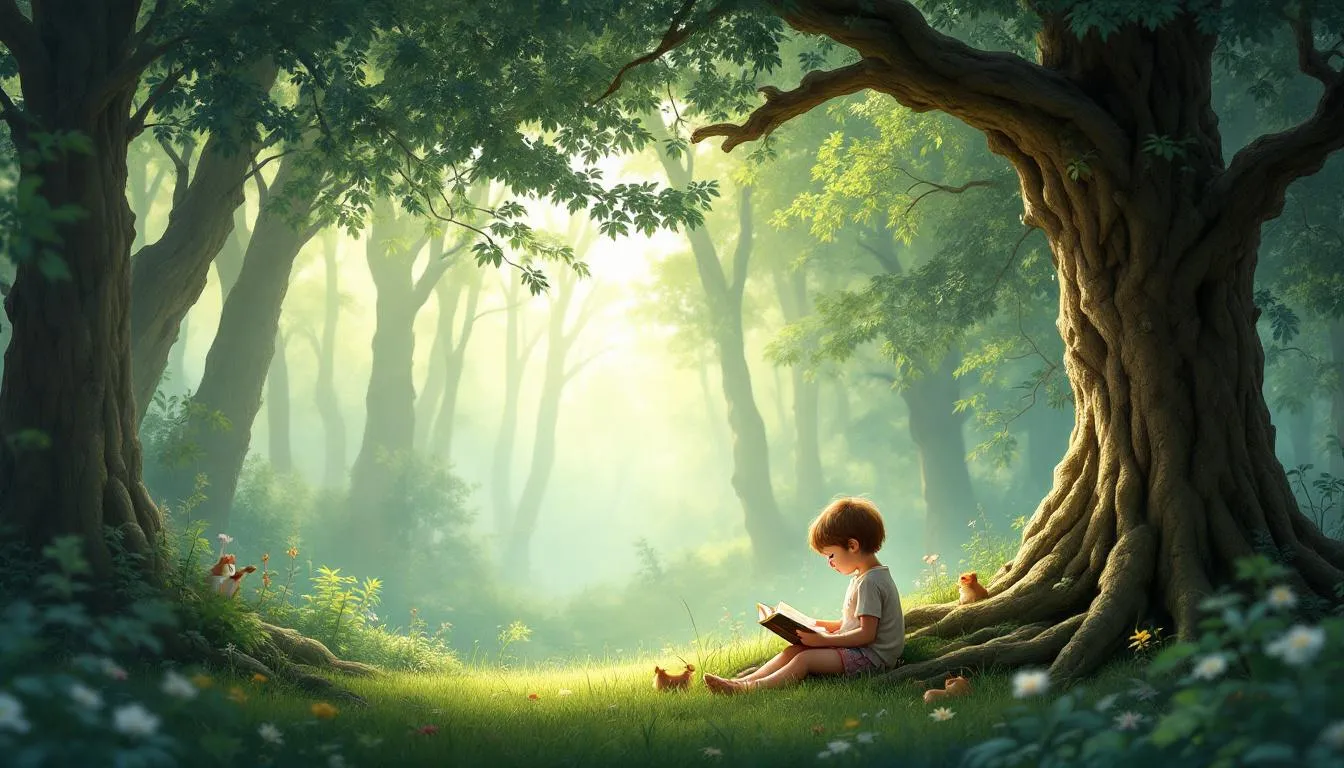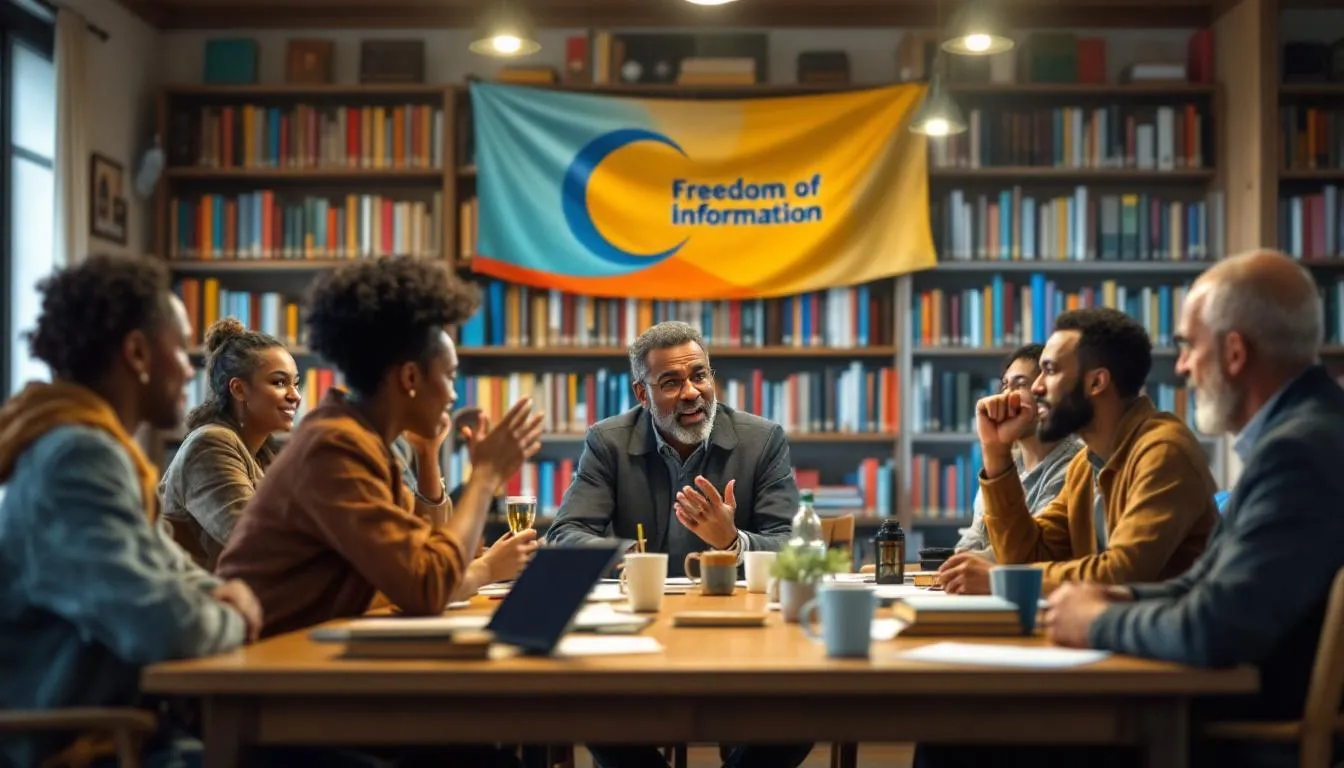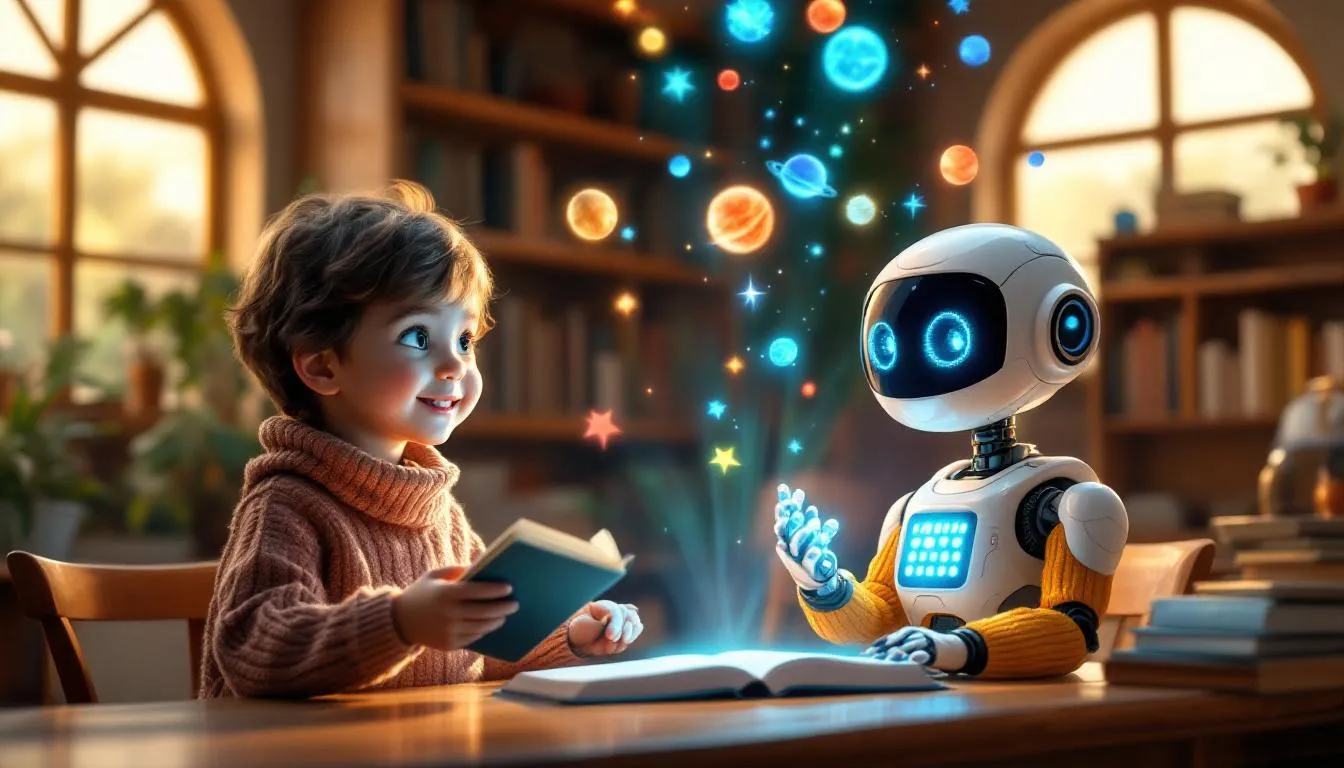Table of Contents
Introduction to Children’s Book Illustration
Illustrations in children’s books are a child’s first magic wand, transforming words into vibrant worlds. Understanding the importance of Early Literacy Development and School Readiness is key to a child’s educational journey. In the enchanting setting of New River Gorge—a breathtaking national park with lush forests and sweeping vistas—illustrations become gateways to adventure. I recall reading to my kids, their eyes wide as they imagined soaring over dramatic cliffs. For more tips on Fostering a Love for Reading in Toddlers, resources like Read Brightly offer great advice. Capturing such a dynamic landscape in a children’s book is an art form in itself. With this captivating backdrop, let’s explore how these illustrations evolve from concept to captivating pages.
The Artistic Journey Begins
The creation of children’s book illustrations often starts with a spark of inspiration—a tiny seed of an idea that grows into a vivid story. For many artists, this seed is planted by the wonders around them. Picture standing at the edge of New River Gorge, with its breathtaking views and whispers of ancient history in the air. It’s a place where nature and storytelling collide, sparking creativity in magical ways.
My inspiration to illustrate a story set in the Gorge came during a family hiking trip. Watching my kids explore the trails with boundless energy, their imaginations ran wild. One moment they were pirates, the next explorers, each tree and rock a new discovery. It struck me—this landscape was a living storybook, waiting to be told through illustrations.
Research is the next step in this creative journey. To bring authenticity to the illustrations, understanding the Gorge’s unique ecosystem and history is crucial. Did you know the New River is one of North America’s oldest rivers? Its waters have carved through the Appalachian Mountains for millions of years, adding depth to illustrations with stories of the past.
Understanding the flora and fauna is equally important. Those majestic cliffs and sprawling forests aren’t just backdrops; they’re characters. Observing the vibrant colors of changing leaves or the delicate dance of local wildlife can inspire the palette and texture of artwork, bringing pages to life with authenticity.
With initial inspirations and a rich backdrop, the next step is to let these elements flow into the illustrator’s mind, shaping rough sketches that capture the essence of the story and the soul of the Gorge.
Sketching the Magic
Sketching the beauty of New River Gorge is an exhilarating dance between imagination and observation. Capturing its sweeping landscapes requires more than a keen eye; it demands a heart open to the wild poetry of nature. I recall setting up my easel on a sun-dappled morning, the mist rising from the gorge creating an ethereal glow. My pencil moved instinctively, tracing the outlines of towering cliffs and the gentle curve of the river. Each stroke was not just a line but a story waiting to unfold.
When translating such scenic beauty into illustrations, it’s essential to capture the essence, not just the image. The Gorge’s vibrant palette—fiery reds and oranges of autumn leaves, the deep greens of summer forests—transforms a simple scene into a vivid tapestry, igniting a child’s imagination. These colors don’t just fill the page; they breathe life into it, inviting young readers to step into a world where adventure awaits around every bend.
Creating characters that resonate with young readers is another crucial step. Children connect deeply with characters, seeing them as friends, guides, or reflections of themselves. Beyond traditional methods, modern tools like KidTeller can help make stories even more personalized, allowing children to become the heroes of their own adventures. For inspiration on timeless tales, exploring a list of Classic Children’s Picture Books can be a great start. In the lush setting of the Gorge, these characters need to be as dynamic and spirited as the environment. I draw inspiration from my children’s boundless curiosity. Their wide-eyed wonder and endless questions fuel my sketches, helping me craft characters that leap off the page with warmth and relatability.
These characters might be animals dwelling in the Gorge or fantastical creatures inspired by its natural wonders. What if a talking squirrel led young adventurers through the forest? Or perhaps a wise old owl shared ancient tales as children sat, captivated, beneath its tree? By anchoring these characters in the landscape’s rich tapestry, they become not just illustrations but companions on the reader’s journey.
As these sketches evolve, the lines and shapes form a narrative that is as much about the characters as it is about the setting. The magic occurs when the two intertwine seamlessly, setting the stage for the next artistic process step.
Bringing Illustrations to Life
Once sketches start to take shape, it’s time to infuse them with life, transforming outlines into worlds of wonder. This phase is where the magic of illustration truly begins to sparkle, as techniques capturing the essence of New River Gorge come into play. The goal is to make each page a portal, transporting young readers straight into this natural wonderland.
One technique I often use involves layering, much like how the river carves through rock to reveal layers beneath. By building up colors and textures, illustrations gain depth and dimension. Think of it as adding seasoning to a dish—it brings out flavors, or in this case, the intricate details of the landscape. For instance, using a soft watercolor wash to depict the misty morning haze or employing bolder brush strokes to highlight rugged cliff textures can make pages pop with realism.
Color plays a crucial role in visual storytelling, acting almost like a mood ring for each scene. The rich hues of the Gorge are visual delights that evoke emotions and set the tone for adventure. I love experimenting with vibrant palettes to reflect changing seasons—fiery reds and golds for autumn, lush greens for spring, and cool blues for a winter river. Each color choice mirrors the story’s emotions and the characters’ journeys. Texture complements color by adding tactile elements to illustrations. The rough bark of an ancient tree or the smooth surface of a sunlit rock invites readers to feel the environment through their imagination.
As illustrations come alive, they narrate a tale about the place and the adventures unfolding within it. Yet, with each brush stroke and color choice, new challenges may arise, demanding creativity and problem-solving. Stay tuned as we delve into navigating these artistic hurdles, ensuring every picture is not just seen but felt, keeping the reader’s journey captivating.
Overcoming Artistic Challenges
Balancing the line between realism and imagination in children’s book illustrations can feel like walking a tightrope, especially when depicting a place as awe-inspiring as New River Gorge. I recall sketching a scene with a family of bears observing a waterfall. My children, peeking over my shoulder, asked, “But do bears really sit and watch waterfalls?” It was a gentle reminder that while artistic freedom allows for whimsy, children’s innate sense of curiosity and realism must be honored.
To keep this balance, I infuse illustrations with elements true to life while letting creativity run wild. Perhaps those bears are indeed real, but they might wear little hats or have a penchant for storytelling. This blend keeps the story grounded while allowing young readers’ imaginations to soar.
Addressing common illustration hurdles is a part of the artistic process every illustrator faces. One tricky challenge is ensuring consistency across pages. When my youngest asked why a tree looked different from one page to another, I realized the importance of maintaining visual continuity—a challenge when working through multiple revisions.
Moreover, there’s the hurdle of meeting deadlines without sacrificing creativity. Taking breaks to wander outside or play with my kids often helps refresh my perspective, enabling me to tackle challenges with renewed energy. For engaging physical activities, the Cosmic Kids Yoga YouTube Channel is a fantastic resource.
Navigating these hurdles is not a solo journey. Collaborating and seeking feedback from others offers fresh insights and perspectives, paving the way for illustrations that resonate deeply with young readers.
Collaboration and Feedback
Working on a children’s book is like hosting a grand dinner party. You might be the chef, but collaboration with authors and editors turns it into a true feast for the senses. In book illustration, teamwork is essential. Working with authors often starts with a coffee conversation, where we exchange ideas and visions. It’s like brainstorming the perfect recipe, finding the right balance between their narrative and my artistic expression.
Authors provide the rich story ingredients, and my job is to bring those to life visually. It’s crucial to understand the heart of their story and the emotions they want to convey. I remember an author once describing a scene with such vivid detail, it was as if I could see the characters dancing in the air right there in the café. That moment of shared vision becomes the foundation of our collaborative journey.
Editors play a crucial role, acting as seasoned critics ensuring every illustration aligns with the narrative arc. Feedback sessions can be both exhilarating and challenging. I once delivered a draft where a character’s scarf color clashed with the scene’s mood. The editor’s keen eye spotted it immediately, and their suggestion transformed it from an eyesore to a harmonious detail enriching the visual story.
Incorporating feedback is akin to refining a dish; sometimes, a pinch of this or a dash of that elevates the entire experience. Each revision, each tweak, is a step toward crafting a cohesive and compelling visual narrative. It’s about being open to ideas that might initially seem daunting but ultimately enhance the story’s magic.
As these creative exchanges flourish, the illustrations begin to take on a life of their own, ready to be finalized in the next exciting phase.
Finalizing the Illustrations
Imagine the final steps of illustrating a children’s book as the last leg of a great adventure. You’ve trekked through inspiration, forded the rivers of sketching, and navigated the labyrinth of feedback. Now, it’s time to add finishing touches that transform a good book into an unforgettable one.
Refinement is like polishing a gemstone. It’s where the magic truly crystallizes. I remember adding tiny details to illustrations, like the glint of sunlight on a river’s surface or intricate patterns in a butterfly’s wings. These details might seem minor, but they breathe life into the artwork. It’s like that extra sprinkle of salt in a chocolate chip cookie recipe—unexpected yet essential.
As I worked on bringing New River Gorge to life, I returned to sketches with fresh eyes, often inspired by my kids’ insights. Their ability to notice things I might have missed—like a hidden creature in the underbrush or a particularly funny-shaped cloud—always added an unexpected twist to the illustrations.
Preparing these illustrations for publication is the final, exhilarating sprint toward the finish line. Here, every image is meticulously scanned, colors are adjusted to maintain vibrancy across formats, and every detail is double-checked for consistency. It’s the equivalent of setting up a stage for a grand performance, ensuring everything is in place for the story to unfold seamlessly.
This stage is not just about aesthetics; it’s about ensuring illustrations are ready to leap into the hands and hearts of young readers. When I see final proofs, it feels like watching a dream take its first steps into the world. The journey of creation is almost complete, but the journey of imagination is just beginning, as each reader embarks on their own adventures within the pages.
Conclusion
Reflecting on the journey of illustrating New River Gorge has been a whirlwind of inspiration and creativity. It’s a reminder of how powerful illustrative art can be in unlocking a child’s imagination, transforming the ordinary into extraordinary adventures. As the final strokes are laid, the hope is that these illustrations captivate and inspire young readers to create their own stories. Let’s encourage our little adventurers to explore the world around them, just as these illustrations explore the Gorge—because every child deserves a story to tell and a world to discover. For more engaging learning experiences, consider resources like Khan Academy Kids, and for printable educational activities, Teachers Pay Teachers offers a wealth of resources. For language learning, Spanish for Kids offers interactive ways to introduce a new language. And for those interested in creative coding and storytelling, Scratch Jr. provides an excellent platform.







